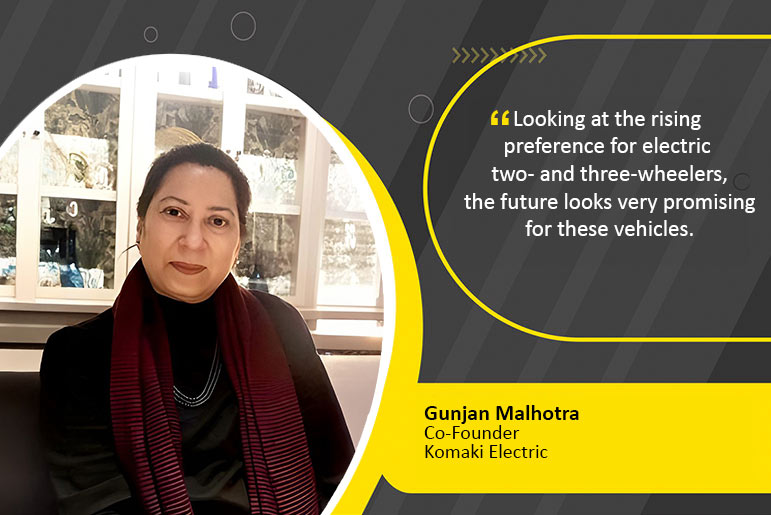Electric vehicles (EVs) have gained a lot of traction in recent years for being at the forefront of steering green mobility. The traditional ICE vehicles have been responsible for increasing pollution levels and contributing to the deteriorating state of air quality. Along with this, the surging fuel prices have further added to the already existing problems of the vehicles. In the pursuit of addressing the issue, EVs were introduced, which rose to the occasion for providing an eco-friendly solution aimed at reducing the carbon footprint.
Even in this, electric two- and three-wheelers are leading the league in driving deeper penetration of EVs across the country and improving last-mile connectivity in urban and semi-urban areas. They come with the added advantage of facilitating short-distance travelling with the flexibility to navigate the narrow lanes of the city seamlessly. Exercising an edge over the others in terms of affordability and ease of manoeuvrability, they are emerging as a sustainable and efficient alternative to conventional transportation.
Looking at the rising preference for electric two- and three-wheelers, the future looks very promising for these vehicles. Demonstrating zero emissions, the vehicles come with a lot of potential to reduce the carbon footprint. In the process, they come in handy for curtailing air pollution, especially in densely populated cities. In addition to this, with cities becoming choked with traffic congestion, the electric two and three-wheelers provide an innovative solution to reduce travel time. Coming with the advantage of compact size, they are well adept at meandering the traffic seamlessly, supporting last-mile connectivity for public transport systems.
Furthermore, these vehicles are comparatively easier to maintain given the cost efficiency of maintaining them. Considering that electricity charging exhibits much lower costs as compared to petrol and diesel, the EVs have an edge over their ICE counterparts in terms of economical operational costs. At the same time, considering that electric vehicles have fewer moving parts, it significantly translates to a reduction in maintenance costs. Furthermore, the plunging battery price bodes well for reducing EV prices which are further fortifying the proposition of the vehicles in the market.
Likewise, the government initiatives rolled out in favour of EVs, such as Faster Adoption and Manufacturing of Hybrid and Electric Vehicles (FAME) are simplifying the landscape for EV transition. Supporting it with incentives, including subsidies, tax exemption, and decreasing GST rates, is giving the desired impetus to EV adoption.
Though the future holds a lot of opportunities for electric two and three-wheelers to thrive, there are still a few challenges restricting the growth of the vehicles. The limited charging infrastructure and the high initial purchasing cost of vehicles are other factors deterring the adoption of EVs especially in rural and semi-urban areas. However, the long-term savings and decreasing battery costs can eventually have a cascading effect on the affordability of the vehicle over a period of time.
Therefore, electric two and three-wheelers have a lot of potential to shape the future of mobility. Offering last-mile connectivity, they are seamlessly making strong inroads into the transport system and easing commuting for the people.

